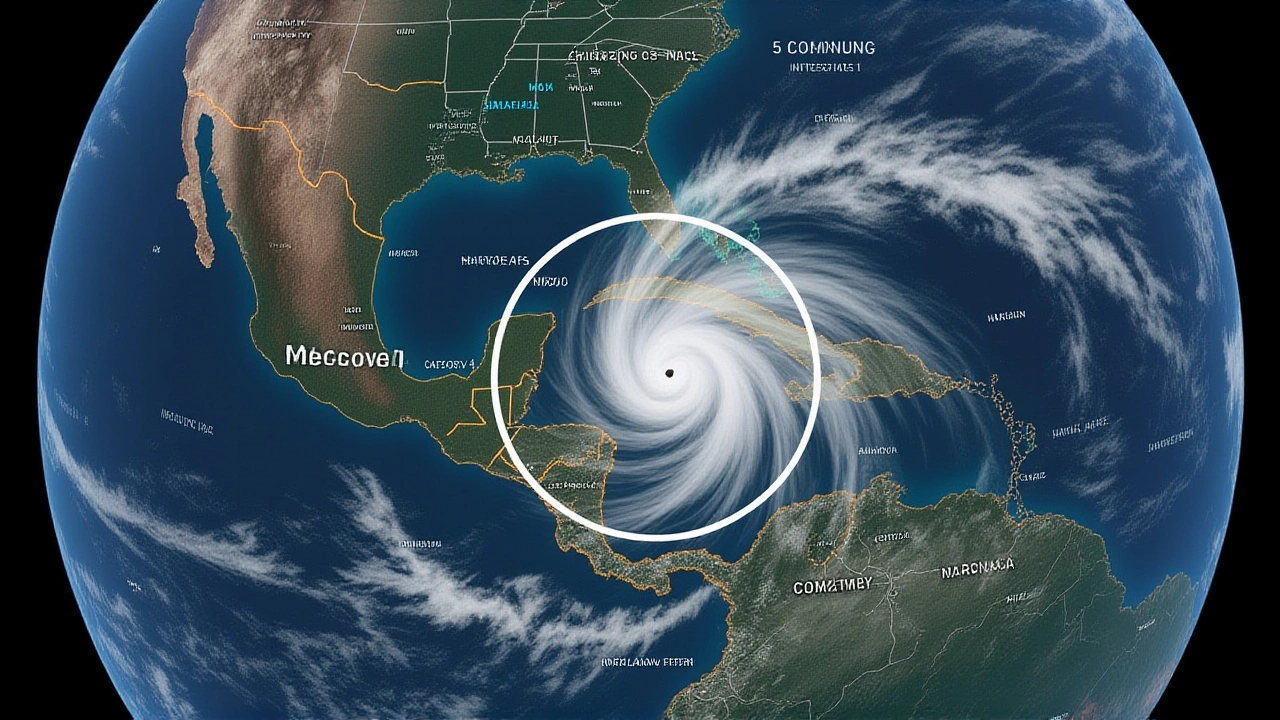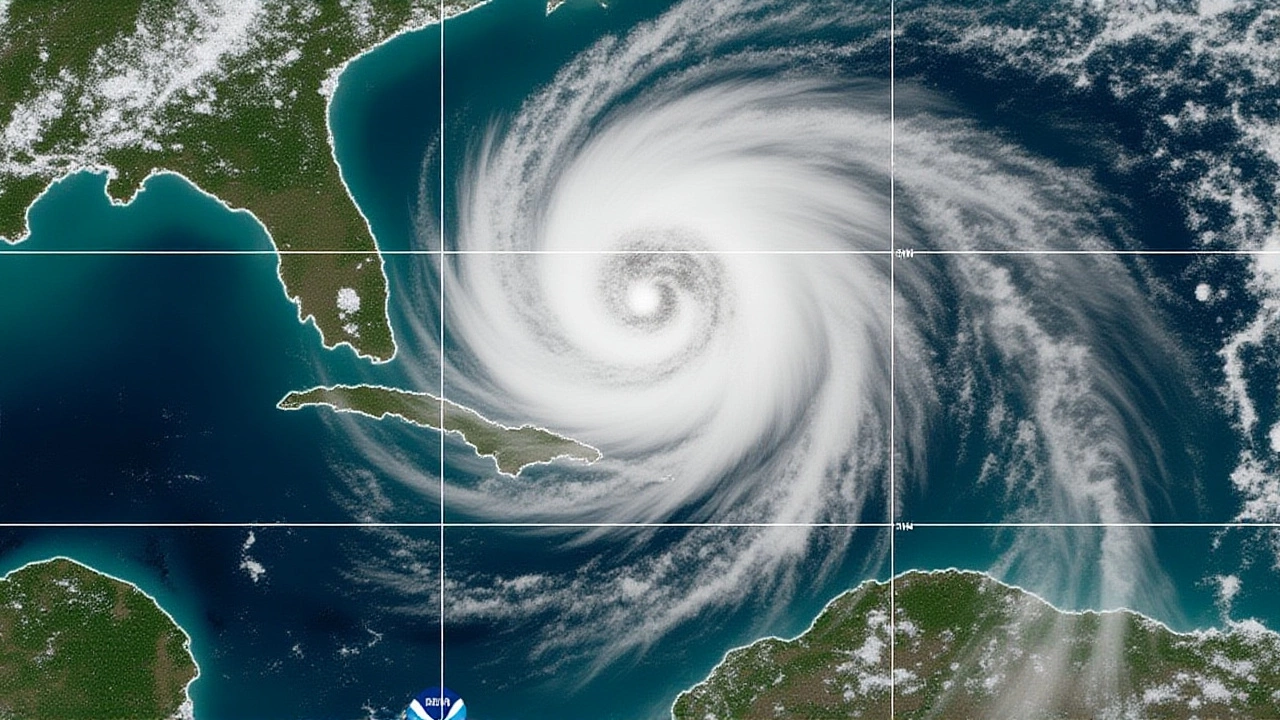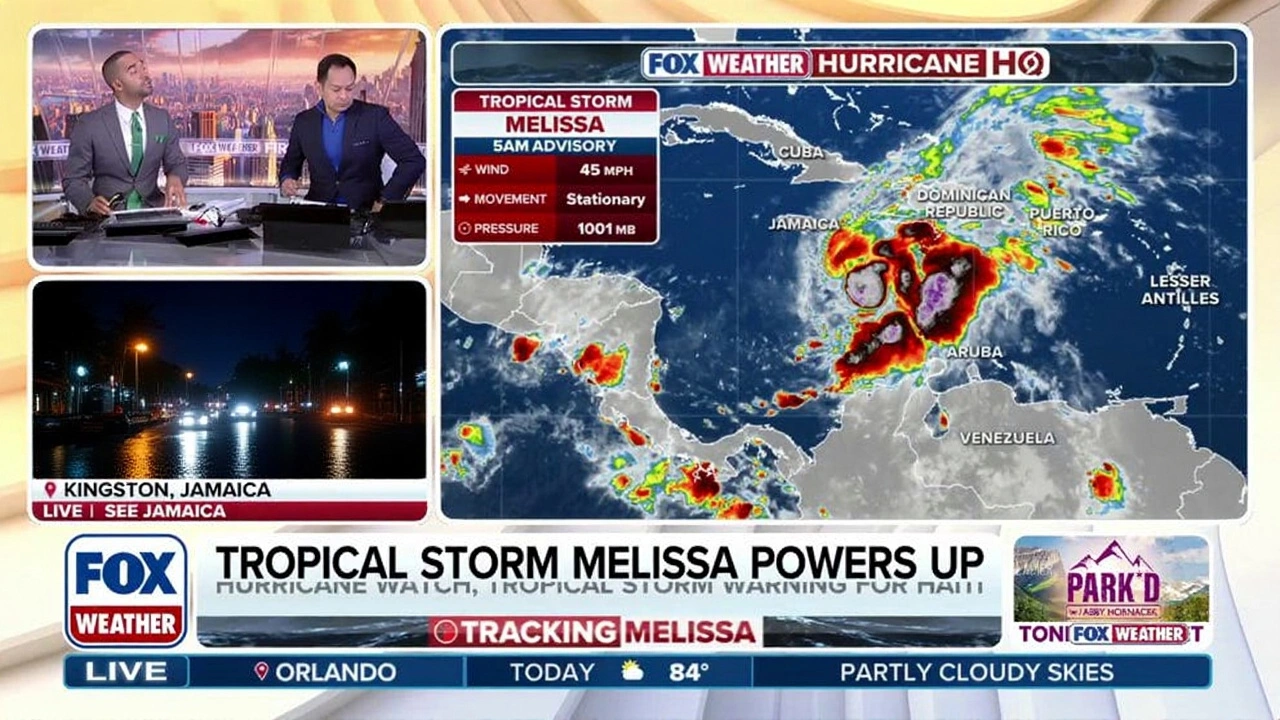When Dave Warren, meteorologist for CBS News Miami issued his 2:41‑minute update on Sunday, October 26, 2025, he warned that Tropical Storm Melissa could explode into a major hurricane by the next day. The storm, drifting westward at a sluggish three miles per hour, is poised to slam directly over Jamaica with "potentially catastrophic" flooding, according to the National Hurricane Center’s latest outlook.
What’s Happening: Melissa’s Current State
At 11:56 AM UTC, satellite feeds showed Melissa’s low‑level circulation becoming more symmetric – a classic sign of rapid intensification. The system’s central pressure has already dipped from 1005 mb to roughly 990 mb in the past six hours, and wind measurements from nearby buoys suggest sustained speeds nudging the 39‑mph tropical‑storm threshold upward.
The National Hurricane Center, the federal agency tasked with tracking Atlantic cyclones, disclosed on its public advisory that the storm’s environment is “very conducive” to strengthening. Warm sea‑surface temperatures near 29 °C, low vertical wind shear, and ample moisture all line up like a perfect storm recipe.
Forecast Path and Intensification
Warren’s forecast, echoed by the Center’s cone of uncertainty, projects Melissa will linger over Jamaica on Monday, October 27, before veering sharply eastward on Tuesday. That right‑turn is driven by an approaching cold front sliding down the eastern United States, a dynamic that will also nudge the system toward Eastern Cuba on October 27‑28.
Model ensembles (GFS, EC‑MW, and UKMET) agree on a rapid escalation: by early Monday, Melissa could reach Category 4 intensity, with sustained winds of 130‑150 mph, and some runs even flirt with Category 5 strength. If the storm follows that trajectory, storm surge heights of 12‑15 feet could batter Jamaica’s north‑coast beaches, while inland rain bands dump upwards of 12 inches of rain in a 24‑hour window.
Potential Impacts on Jamaica
Jamaica’s topography amplifies the flood threat. The island’s central ridge forces moisture‑laden air upward, spawning intense orographic rain. Communities such as St. Ann, Clarendon, and the capital, Kingston, sit in low‑lying floodplains that have struggled against historic storms like Hurricane Dean (2007) and more recently, the 2023 flooding event that left 200 homes water‑logged.
Emergency Management Organization (JMEMO) has not yet issued an evacuation order, but the agency’s spokesperson, Dr. Simone Edwards, told local radio that “pre‑emptive measures are being coordinated across parishes” and urged residents to stock essential supplies, secure loose objects, and heed any local council warnings.
Infrastructure concerns loom large. The main highway, A1, which links Kingston to Montego Bay, passes through flood‑prone valleys. Should Melissa’s rain bands overrun the area, the route could become impassable, hampering rescue efforts.

Reactions from Authorities and Experts
Besides JMEMO, the Ministry of Health has activated its emergency response team to monitor potential water‑borne diseases, a common after‑effect of prolonged flooding. Dr. Aiden Shaw, an epidemiologist at the University of the West Indies, warned that “standing water can become a breeding ground for leptospirosis and dengue, especially if clean water supplies are compromised.”
Across the Caribbean, the Caribbean Disaster Emergency Management Agency (CDEMA) issued a statement urging all member states to stay alert. In a briefing, CDEMA Director Rita Simmons highlighted that the storm’s slow pace increases the risk of cumulative rainfall, not just wind damage.
Broader Regional Implications
After skimming Jamaica, Melissa is expected to brush the eastern tip of Cuba on October 27‑28, threatening the windward coast of Santiago de Cuba with heavy rain and gusts exceeding 110 mph. The Bahamas then lie in Melissa’s path from October 28‑29, where islands such as Grand Bahama and Abaco could see tropical‑storm‑force winds and storm surge.
U.S. forecasters note that the system’s eventual northeast turn will bring it into the Atlantic’s “mid‑latitude westerlies,” potentially feeding moisture into a developing frontal system over the eastern United States. This could translate into rain‑enhanced thunderstorms across Florida and the Carolinas by early November.

What to Watch Next
The next official advisory from the National Hurricane Center is slated for 2:00 PM EDT on Monday. Residents should monitor local radio, official social‑media channels, and the JAMMET (Jamaica Meteorological Service) website for real‑time updates.
Key dates to keep on your calendar:
- Monday, Oct 27 – Peak intensification over Jamaica.
- Tuesday, Oct 28 – Potential landfall in eastern Cuba.
- Wednesday, Oct 29 – Impacts on the Bahamas.
- Thursday, Oct 30 – System moves into open Atlantic waters.
Preparedness measures such as securing roofs, clearing drainage channels, and having an evacuation kit ready could make the difference between a harrowing night and a manageable one.
Frequently Asked Questions
How likely is it that Melissa will become a Category 5 hurricane?
Current model ensembles give Melissa a 30‑40% chance of reaching Category 5 before it exits the Caribbean. Rapid intensification is favored by warm sea‑surface temperatures and low wind shear, but small changes in the surrounding environment could cap it at Category 4.
What specific areas of Jamaica are most at risk?
The north‑coast parishes of St. Ann and Clarendon, as well as low‑lying sections of Kingston and Portmore, face the greatest flood threat due to their proximity to river basins and historic storm surge pathways.
What should residents do right now to prepare?
Secure windows and doors, clear gutters, stock enough water and non‑perishable food for at least 72 hours, keep a battery‑powered radio handy, and follow any evacuation orders issued by local authorities.
How will Melissa affect the Bahamas after Cuba?
The Bahamas can expect tropical‑storm‑force winds, heavy rain, and localized flooding, especially on islands oriented toward the storm’s northeastern quadrant. Early warnings suggest possible power outages on Grand Bahama.
Is there a chance Melissa could impact the United States?
While the core of Melissa is expected to stay south of the U.S., its moisture will likely be drawn into a frontal system moving across the Southeast, bringing enhanced rain and possible severe thunderstorms to Florida, Georgia, and the Carolinas later in the week.
